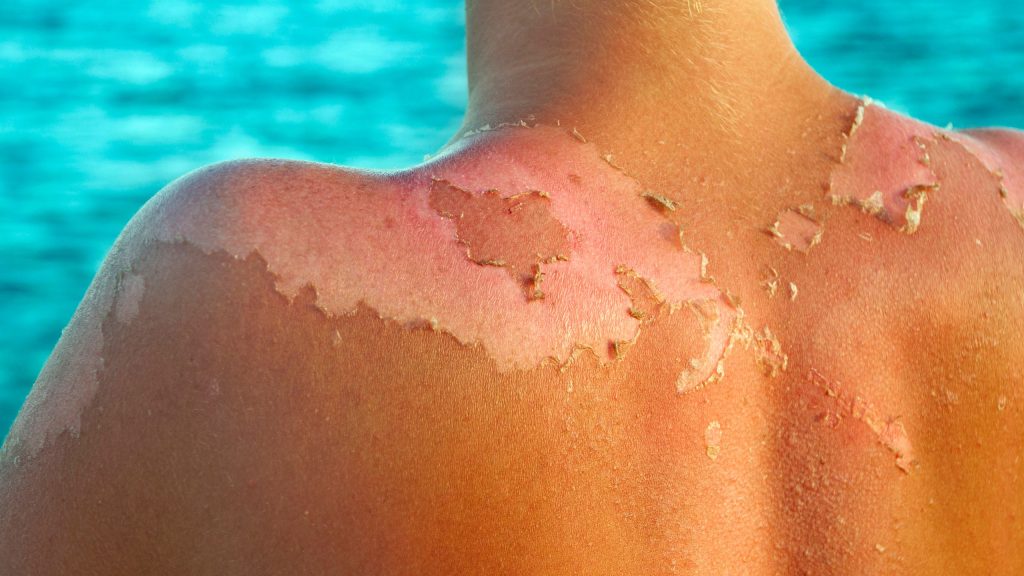
Sunburn SOS: How to Heal and Protect Your Skin After Sun Exposure is your ultimate guide to managing and preventing sun damage. Imagine a beautiful day at the beach, swimming, and basking in the sun, only to be greeted the next morning by a painful, red, and potentially blistered skin. This is a common scenario for many, and it often leads to discomfort, potential long-term skin damage, and even emotional distress. This article will explore the best ways to effectively treat, protect, and heal your skin after sun exposure, guiding you towards a healthier, sun-safe future. We’ll cover everything from immediate relief to long-term protection, ensuring you have a clear action plan for next time. We’ll start by defining sunburn and its causes before diving into treatment options and prevention strategies. We’ll also give you a glimpse into the structure of this helpful resource.
Understanding Sunburn: The Basics
What is Sunburn?
Sunburn is a common skin reaction caused by overexposure to ultraviolet (UV) radiation from the sun. Excessive exposure triggers inflammation and redness in the skin, leading to discomfort and potential long-term damage. Prolonged sun exposure can also lead to skin aging, wrinkles, and an increased risk of skin cancer. Understanding the underlying causes is crucial to effective treatment and prevention. A recent study by the American Academy of Dermatology found that over 90% of sunburns could have been avoided with proper sun protection. This highlights the importance of preventative measures in maintaining healthy skin.
Immediate Sunburn Relief: The First Steps
Cooling and Soothing Measures
The first step in treating sunburn is to provide immediate relief to the affected areas. Use cool, not cold, compresses or baths to soothe the burning and reduce inflammation. Avoid harsh scrubbing or exfoliating which can further damage the skin. Apply cool compresses and avoid hot showers. This can help to reduce the swelling and redness. Also, you can apply aloe vera gel or cream, which has natural cooling properties. Aloe vera is a popular natural remedy for sunburn relief, known for its soothing effects and ability to help reduce inflammation. Apply liberally to affected areas.
Addressing Pain and Discomfort
Pain Management Strategies
The pain associated with sunburn can range from mild to intense, affecting daily activities. Over-the-counter pain relievers such as ibuprofen or acetaminophen can help to alleviate discomfort. Applying a cool, wet washcloth can also help to reduce inflammation and provide some much needed relief. It is crucial to remember to never use harsh, abrasive products on your skin during this process. Applying gentle, hydrating products are a good option. For more severe pain, consult a healthcare professional.
Preventing Further Sun Damage
Choosing the Right Sun Protection
To prevent further sun damage, it is vital to protect your skin from future sun exposure. This includes using sunscreen with a high SPF (Sun Protection Factor) regularly, especially during peak sun hours. Seek shade whenever possible, and wear protective clothing, such as long-sleeved shirts and wide-brimmed hats. It’s essential to be aware of the different levels of sun protection different products offer. Remember to reapply sunscreen frequently, especially after swimming or sweating.
Long-Term Skin Healing
Promoting Healthy Skin
Sunburn can sometimes leave permanent damage, but effective care can minimize these effects. Using gentle cleansers to help the skin heal is important. Moisturize frequently with a rich, non-comedogenic product to help reduce dryness and flakiness. Maintain a healthy diet rich in fruits, vegetables, and antioxidants. This aids in the overall healing process, supporting skin cell regeneration. Getting enough sleep and managing stress can also contribute to quicker healing and a strengthened immune system.
Frequently Asked Questions
What is the best way to prevent sunburn?
The most effective way to prevent sunburn is by consistently using a broad-spectrum sunscreen with an SPF of 30 or higher. Apply sunscreen liberally 15 minutes before sun exposure, and reapply every two hours, or more frequently if swimming or sweating. Seek shade during peak sun hours. Wearing protective clothing, such as long-sleeved shirts and hats, can also significantly reduce the risk of sunburn. Always remember the importance of consistent and proactive measures in preventing sunburns.
How long does it take for a sunburn to heal?
The healing time for a sunburn varies depending on the severity of the burn and individual skin type. Mild sunburns typically heal within a few days, with the redness and discomfort subsiding. More severe burns may take longer to heal and may involve blistering or peeling skin. If symptoms worsen or persist, consult a healthcare professional. The speed of healing also depends on the individual’s body’s natural healing process and the type of care applied.
In conclusion, understanding how to effectively heal and protect your skin after sunburn is crucial for long-term skin health. Following the tips in this article will help you manage discomfort, prevent further damage, and promote faster recovery. Remember, prevention is key – use appropriate sun protection measures regularly. For personalized advice or if your symptoms worsen, consult a dermatologist immediately. Sunburn SOS is here to help you on your journey to healthy skin! Ready to learn more about protecting your skin from future damage? Click here for our guide on sun safety tips!